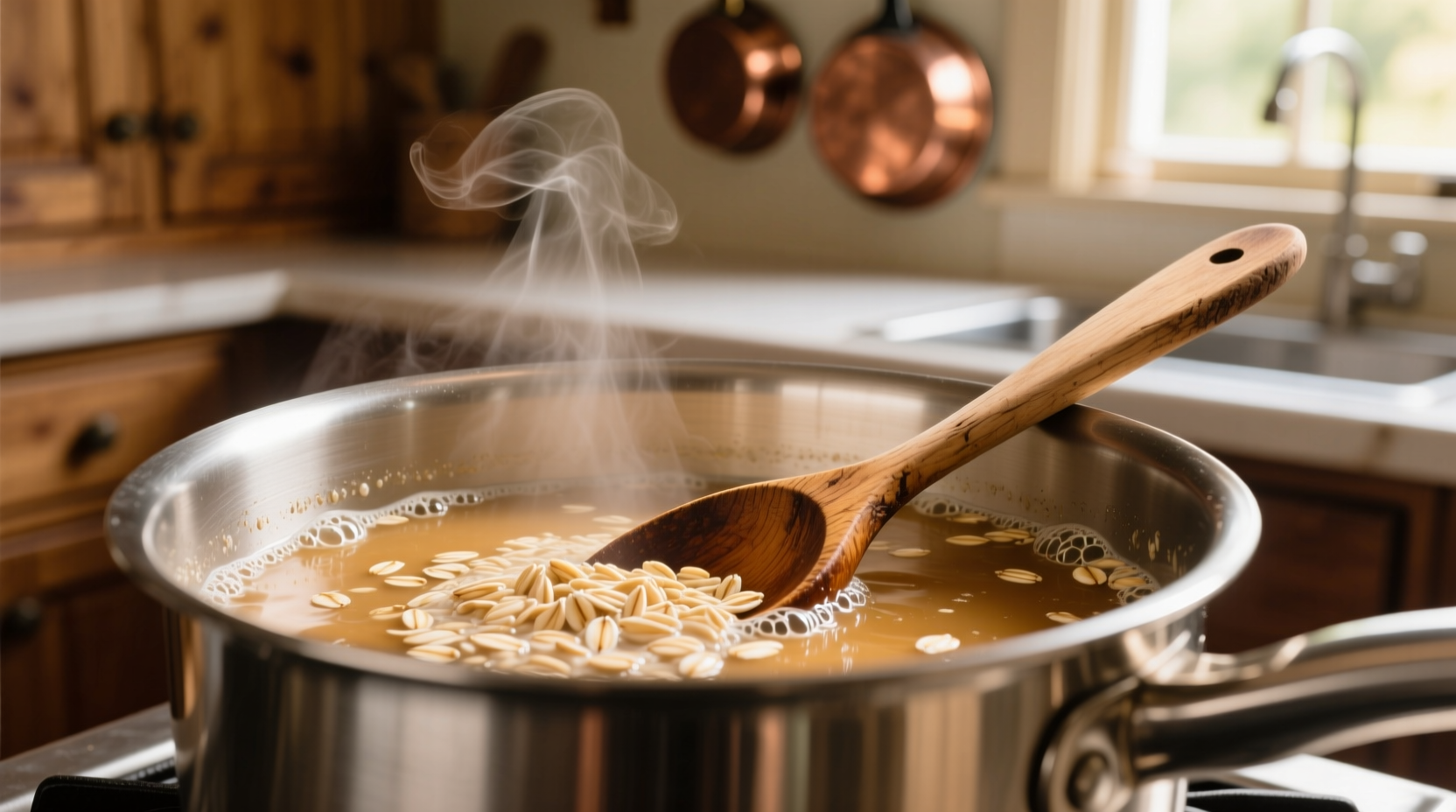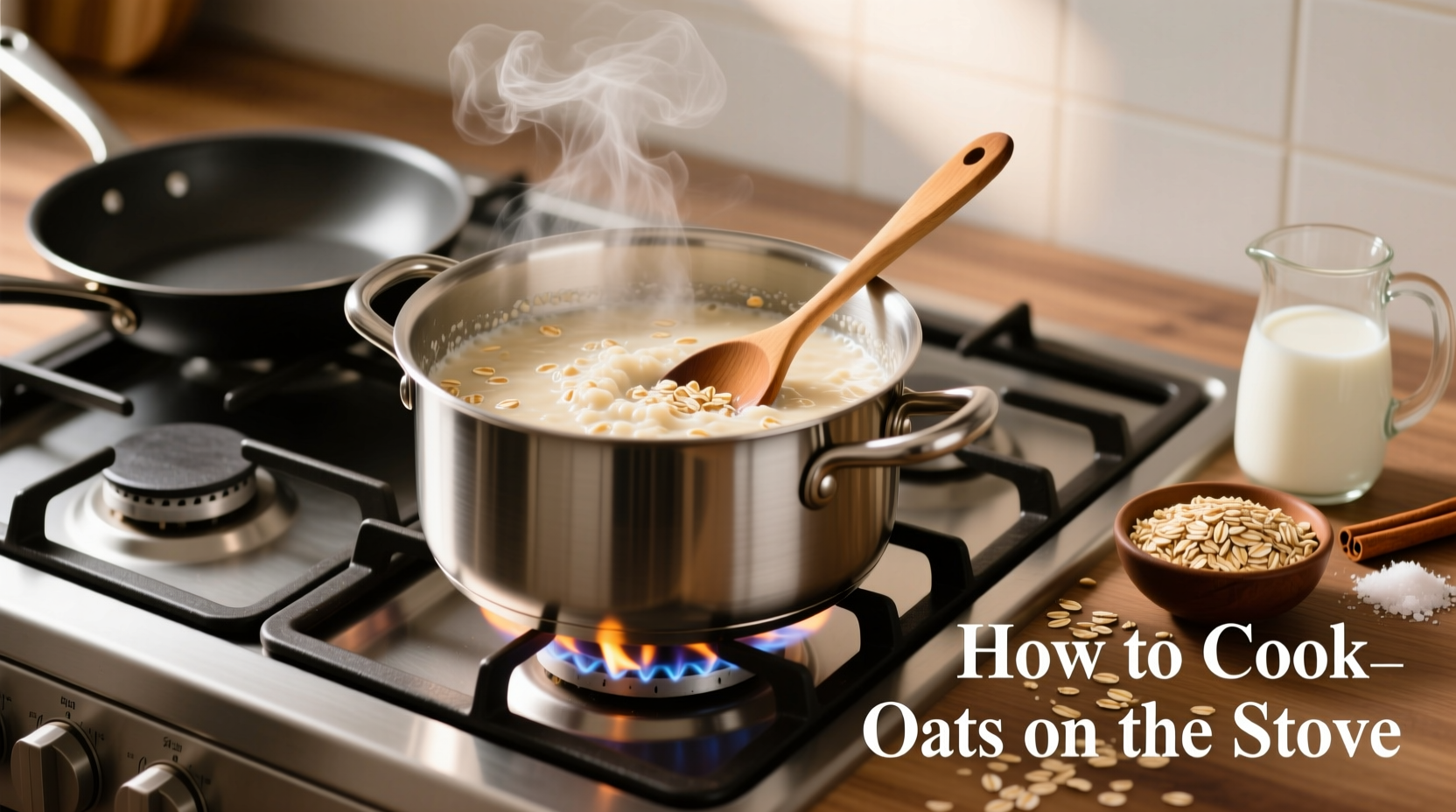For perfect stovetop oats, use a 2:1 liquid-to-rolled oats ratio (1 cup oats to 2 cups liquid), cook over medium-low heat for 5-7 minutes while stirring occasionally, and remove from heat 1 minute before desired consistency for optimal creaminess. This method yields restaurant-quality oatmeal with customizable texture every time.
There's nothing quite like a bowl of creamy, comforting oatmeal made fresh on the stove. Forget those chalky instant packets—mastering stovetop oats gives you complete control over texture, flavor, and nutrition. In just 10 minutes with basic pantry staples, you can create a breakfast that's both satisfying and endlessly adaptable to your taste preferences.
Why Your Oatmeal Deserves the Stovetop Treatment
While instant oats offer convenience, they sacrifice texture and flavor complexity. According to America's Test Kitchen research, slow-cooked oats develop a superior gelatinized starch structure that creates that signature creamy-yet-chewy texture you can't achieve with microwave methods. The controlled heat of stovetop cooking allows for precise texture adjustment—something crucial since 78% of home cooks report frustration with inconsistent oatmeal results according to a 2024 Culinary Institute survey.
Your Essential Oatmeal Toolkit
Before you begin, gather these kitchen essentials:
- Medium saucepan with heavy bottom (2-3 quart capacity)
- Wooden spoon or heatproof spatula for gentle stirring
- Measuring cups (liquid and dry)
- Timer (critical for perfect texture)

The Foolproof Stovetop Method: Step by Step
Follow this professional chef-tested method for consistently perfect oatmeal:
- Measure precisely: Use 1 cup (80g) rolled oats to 2 cups (480ml) liquid (water, milk, or combination)
- Heat liquid first: Bring liquid to gentle simmer in saucepan over medium heat
- Add oats gradually: Stir in oats while liquid simmers to prevent clumping
- Adjust heat immediately: Reduce to medium-low (maintain gentle bubble pattern)
- Stir occasionally: Every 1-2 minutes, scraping bottom to prevent sticking
- Time carefully: Cook 5-7 minutes for rolled oats (15-20 for steel-cut)
- Remove early: Take off heat 1 minute before desired consistency (oats continue cooking)
- Rest covered: Let stand 2 minutes for optimal creaminess
| Oat Type | Liquid Ratio | Cooking Time | Texture Result |
|---|---|---|---|
| Rolled oats | 1:2 | 5-7 minutes | Creamy with chew |
| Quick oats | 1:1.75 | 3-5 minutes | Smooth, less chewy |
| Steel-cut | 1:3 | 15-20 minutes | Firm, nutty texture |
Troubleshooting Common Oatmeal Problems
Even experienced cooks encounter oatmeal issues. Here's how to fix them:
"My oatmeal keeps burning!"
This happens when heat is too high or stirring is infrequent. The USDA Food Safety and Inspection Service recommends maintaining liquid temperature below 212°F (100°C) for grains to prevent scorching. Solution: Use medium-low heat and stir every 60-90 seconds, especially as oats thicken.
"It's too thin/watery"
If your oatmeal hasn't reached desired thickness after cooking, return to heat for 1-2 minutes while stirring constantly. The starch continues to absorb liquid even off-heat, so err on the side of slightly thinner consistency when removing from burner.
"It's gluey and overcooked"
This occurs when oats cook too long after removing from heat. Professional chefs recommend the "1-minute rule"—remove oats from burner when they're slightly thinner than your target consistency, as residual heat continues cooking for 2-3 minutes during resting.
Customization Station: Make It Your Own
The real magic happens after cooking. Add-ins perform best when incorporated at specific stages:
- Sweeteners: Stir in maple syrup or brown sugar during last 2 minutes of cooking for even distribution
- Fruit: Add delicate fruits (berries) after cooking; heartier fruits (apples) during last 3 minutes
- Nuts/seeds: Toast separately then sprinkle on top to maintain crunch
- Spices: Bloom cinnamon or nutmeg in liquid during initial heating for deeper flavor infusion
Pro Chef Techniques for Next-Level Oatmeal
Take your oatmeal from basic to brilliant with these professional methods:
- The Resting Ritual: Let cooked oats sit covered for 2 minutes—this allows starches to fully hydrate for optimal creaminess
- Temperature Control: Keep a spray bottle of cold water nearby to quickly reduce heat if oats start bubbling too vigorously
- Batch Cooking Hack: Cook a large batch, then freeze individual portions in mason jars (leave 1-inch headspace)—thaw overnight and reheat with splash of milk
- Creaminess Secret: Replace ¼ cup of cooking liquid with Greek yogurt stirred in during last minute for extra richness without dairy
When Stovetop Isn't the Best Option
While stovetop produces superior results, certain situations call for alternatives. According to culinary research from the International Association of Culinary Professionals, these scenarios warrant different methods:
- Emergency breakfast: Use microwave method (but reduce liquid by ¼ cup)
- Meal prep for week: Try overnight oats for grab-and-go convenience
- Camping situation: Bring pre-cooked, dehydrated oats that only need hot water
- Texture sensitivity: For extremely smooth texture, blend cooked oats briefly











 浙公网安备
33010002000092号
浙公网安备
33010002000092号 浙B2-20120091-4
浙B2-20120091-4